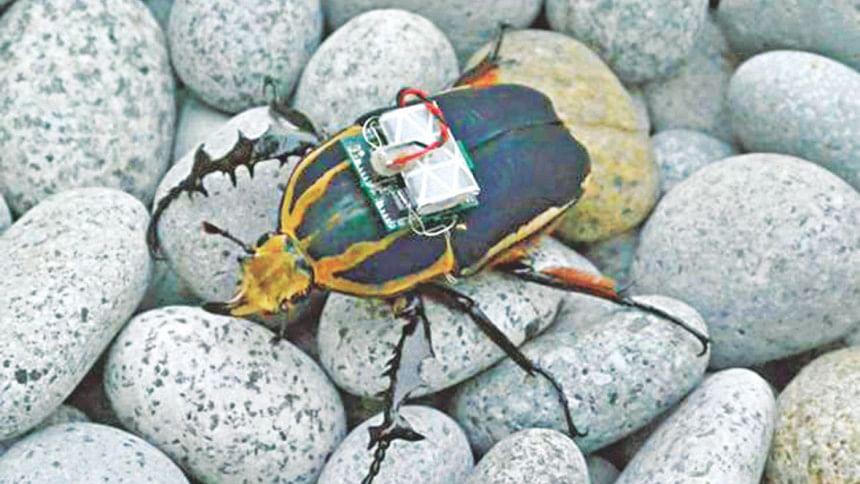Scientists control flight of beetles

Scientists have controlled the mid-air movements of free-flying insects using a radio transmitter and a miniature backpack of electronics worn by “cyborg beetles”.
The beetles were made to take off and land, fly to the right or left, and even to hover in mid-flight depending on the radio commands, the scientists said.
If the technology can be further refined, it would be possible in the future to use flying insects as miniature drones loaded with tiny electronic sensors for flying over and searching difficult terrain, they said.
Although electronics have been used before to control the movements of insects, it is believed to be the first scientific demonstration of using radio commands to control the fine aerial movements of free-flying beetles, the researchers said.
“Beetles are ideal study subjects because they can carry relatively heavy payloads,” said Hirotaka Sato of the Nanyang Technological University in Singapore, who carried out the research with colleagues at the University of California, Berkeley.
“We could easily add a small microphone and thermal sensors for applications in search-and-rescue missions. With this technology, we could safely explore areas not accessible before, such as the small nooks and crevices in a collapsed building,” Dr Sato said.
The study, published in the journal Current Biology, involved the attachment of a tiny microprocessor and a built-in wireless receiver and transmitter to the back of the giant flower beetle, which is six centimetres long and weighs eight grams -- nearly the same as a pound coin.
The complete device is powered by a 3.9 volt lithium battery and is connected to six micro-electrodes implanted into the insect's wing-folding coleopteran muscles, the scientists discovered.
Signals sent to the beetle every thousandth of a second stimulated it to take off, turn left or right, hover in mid-flight and land again. The giant flower beetles were untethered and could fly completely free, they said.

 For all latest news, follow The Daily Star's Google News channel.
For all latest news, follow The Daily Star's Google News channel. 



Comments